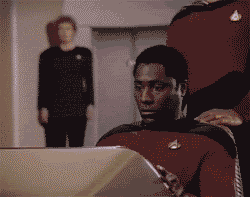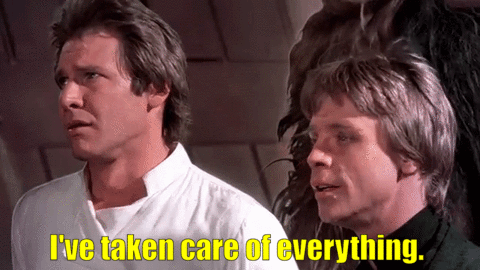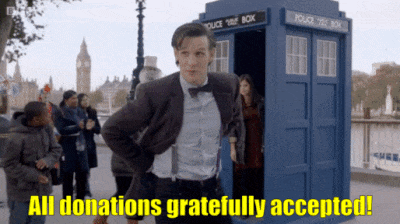Who would’ve thought there was so much variation and evolution to the TNG jumpsuits – to most casual fans, an instantly-recognizable uniform design? (Certainly not me, before I began this detailed costume analysis!
In retrospect, it may not be that surprising considering the series had three costume designers, each with their own creative inclinations, and each with their own instructions and boundaries from the producers.
William Ware Theiss established a stylish, striking aesthetic for the show, following up on his costuming work from The Original Series.
Nevertheless, his TNG jumpsuits were a constant work-in-progress; he almost immediately began experimenting with several facets of his then-new uniform designs, including the broadness of the shoulders, the various paneling proportions, and the overall fit.
He also briefly experimented with two-piece uniforms that mimicked the appearance of the jumpsuits, as well as a back-zipping variant for Data toward the end of the season.
Elements of his TNG-era uniform designs would continue to echo on subsequent uniform designs for many years to come: the three division colors, the pip-based rank insignia worn on the upper right and the communicator on the left chest, and the presence of a yoke, the lower pant leg “slits,” to name several.
For season two, Durinda Rice Wood wasn’t permitted to outright change the Starfleet uniforms that Theiss had established, but she did subtly (and not-so-subtly) redesign practically every major element of the TNG jumpsuits over the course of the season.
Her subtly-redesigned TNG jumpsuits were primarily seen on Captain Picard and Geordi La Forge, both of whom wore newly-made uniforms the entire season. Data wore her redesigned jumpsuit for the latter third or so of the season.
Wood also experimented with other design changes on some extras and minor supporting characters.
She made other significant creative contributions to the show, expanding the TNG-era uniform family to include a couple original designs of her own (discussed in other costume analyses).
The TNG jumpsuits were again redesigned by Robert Blackman, beginning in season three and fully transitioning to his newer adaptation at the beginning of season four.
The most notable changes included the consolidation of the yoke into solid black panels, and the addition of the mandarin-style collar that would come to be associated with nearly all TNG-era uniforms.
After initially trying several different approaches, he moved the zipper to the back of the jumpsuit for main characters, and most recurring and prominent guest characters as the show progressed.
The existing uniforms from the first two seasons continued to be used throughout season three; many were “updated” to the later style and used throughout the remainder of the show, primarily on extras and background performers. Blackman did his best to homogenize the newer uniforms and the older ones the wardrobe team had inherited.
The TNG jumpsuits were at their most consistent during that fourth season, but they continually evolved over the remainder of the show.
Like his predecessors, Blackman experimented with different pattern lines, contours, proportions, and detailing. One of the more notable (and noticeable) changes was that he deepened the yokes over the last few seasons.
All three of The Next Generation’s costume designers played major roles in the evolving aesthetic of the TNG jumpsuits, and all three were either nominated or won Emmy awards for their work on the series.
The Next Generation was an extraordinary show, and its Starfleet uniforms remain iconic not only in science-fiction fandom, but mainstream Western culture itself.
Congratulations on finishing this comprehensive analysis of the TNG jumpsuits!
After that massive info-dump, you might feel like this:

But don’t worry!
I took all the relevant construction details into consideration for my Tailors Gone Wild TNG jumpsuit patterns, and my TNG jumpsuit sewing tutorial is thorough enough to help you to construct a fantastic replica of your own. 🙂
And if you enjoyed this costume analysis, please support my costume research on Ko-Fi!
Every bar of gold-pressed latinum helps me produce more sewing/costuming resources like this. 🙂


